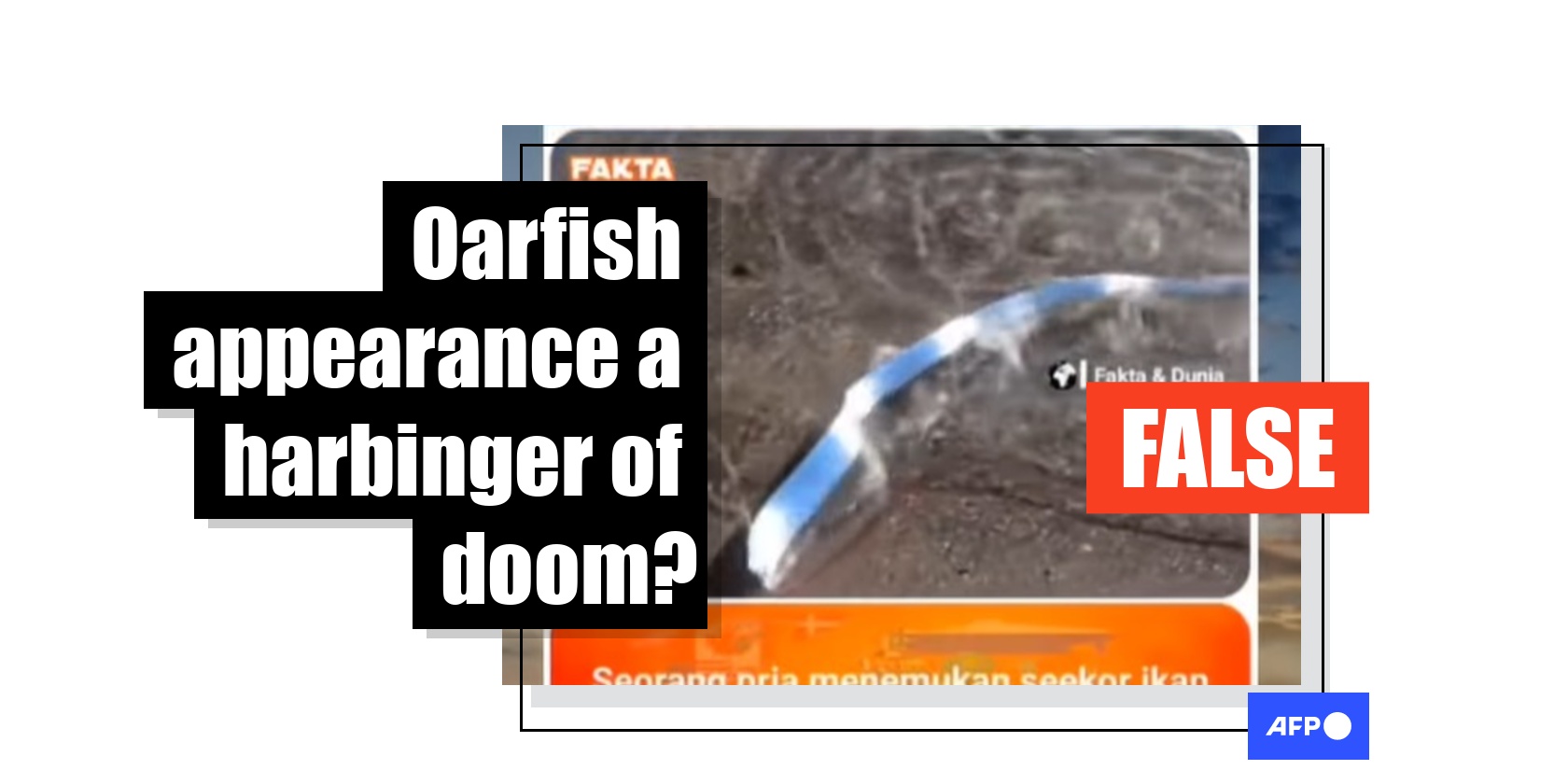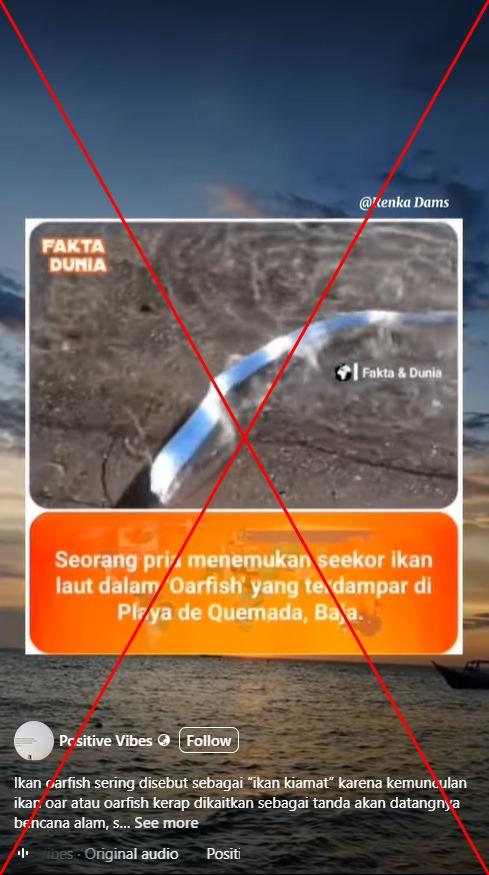
Oarfish sighting does not foreshadow natural disasters
- Published on March 25, 2025 at 06:47
- 2 min read
- By Cintia NABI CABRAL, AFP France
- Translation and adaptation Raevathi SUPRAMANIAM , AFP Malaysia , AFP Indonesia
"Oarfish are often called 'doomsday fish' because their appearance is often regarded as a sign of impending natural disasters, such as earthquakes and tsunamis," reads the Indonesian-language caption to a Facebook video shared on March 8, 2025.

Similar posts linking the oarfish to natural disasters were shared elsewhere on Facebook here and here.
But there is no scientific data to back up those claims.
Deep sea fish
The oarfish, also known by its scientific name regalecus glesne, lives in deep sea environments and has a ribbon-like body that can grow up to 10 metres (36 feet) long (archived link).
Thomas Claverie, a marine biologist at the University of Reunion Island told AFP on February 26 that while rare, fishermen have seen oarfish from time to time, adding that those who have seen them "have not died in a tsunami" (archived link).
Marine geophysicist Marc-André Gutscher from the French National Centre for Scientific Research told AFP on March 5 that the sighting of the fish on a beach could be due to the El Niño phenomenon -- when the temperature at the surface of the water is higher than normal, and the deeper waters are cooler than normal -- which is unrelated to seismic activities (archived link).
"This is a phenomenon that has long been known to fishermen who, during El Niño years, catch fish that they do not normally catch," he said.
Japanese folklore
The idea that the oarfish is a bad omen comes from Japanese folklore, where the fish are considered "the messenger from the sea dragon god's palace" and surface to warn people about earthquakes (archived link).
A 2018 study that analysed the link between sightings of deep sea fishes and earthquake occurrences in Japan between 1928 and 2011, however, found that no sufficient data to support it (archived link).
"From this investigation, the spatiotemporal relationship between deep‐sea fish appearances and earthquakes was hardly found.
"Hence, this Japanese folklore is deemed to be a superstition attributed to the illusory correlation between the two events," the study found.
Copyright © AFP 2017-2025. Any commercial use of this content requires a subscription. Click here to find out more.
Is there content that you would like AFP to fact-check? Get in touch.
Contact us
